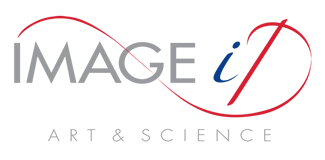Image ID
Image ID significa Identidade de uma imagem. É um conceito, do qual surgiu um método, ambos criados por Philip Hallawell. Image ID surgiu a partir de diversas associações de teorias e trabalhos científicos com os fundamentos da linguagem visual.

The basic premise of Image ID is that all images and objects have an identity, defined by the set of lines, shapes, colours and composition that generate sensations and emotions, which are understood and perceived unconsciously by anyone, regardless of the era in which they live or have lived, their culture or their race. Images and objects express something that transcends what they represent and that is independent of their aesthetics.
Philip Hallawell is an artist who has been studying visual language for 50 years. His main theme as an artist is the human being and the human figure. This interest has led him to take an interest in psychology, anthropology, and sociology, as well as philosophical questions.
The first association he made was with Carl Jung's theory of archetypal symbols and the structures of images. In 1971, Philip read the book Man and His Symbols, published posthumously in 1964, in which Jung explains his theory of archetypal symbols, universal symbols common to all human beings and which form the language of the subconscious and dreams. Sigmund Freud was the first to postulate that archetypal symbols exist, and today this concept is accepted in academic circles. Among the various symbols, Jung spoke of the meanings of geometric shapes, particularly the square and the circle, and it was this that Philip associated with the structures of images, because every composition is structured in a geometric shape, or in a set of shapes. He realised that every image, whether intentionally or not, has an archetypal symbol in its structure and that this defines what the image expresses, because this form is perceived subliminally and unconsciously. The same happens with any object and with the human face and figure.
To date, there is no evidence of anyone having made the same association. In 1994, Philip Hallawell spoke about this publicly in the series À Mão Livre, which he presented on TV Cultura, and in his book of the same name. He extended the idea to the meaning of lines and colours and concluded that we understand the meaning of an image, what it expresses, by unconsciously reading all the archetypal symbols it contains.
The second association came when he read Joseph LeDoux's book The Emotional Brain in 1999. Philip realised that archetypal symbols are "triggers" that stimulate the systems in the limbic area that generate emotions. This happens before we can understand what an image or object represents or means rationally. Recent research shows that a person has their first impressions of another person in fifty milliseconds.
An image, or an object, is essentially made up of points of light, which are perceived as lines, shapes and colours, all archetypal symbols that generate emotions and sensations almost instantaneously. This is the identity of the image.
We react to the image emotionally, before we can process it intellectually. This explains why image can affect behaviour, especially when it comes to personal image.
This knowledge is fundamental to understanding how images work and how they affect people. It is fundamental to creation in all the visual arts, in design, architecture and advertising, and especially in personal image. It can be applied in education, psychology, the social sciences, and administrative processes.
In 2002, Philip used Image ID to create Visagism Image ID, a method that revolutionised the field of personal image creation and, in 2017, the Psychology Institute at the University of São Paulo recognised this method as the scientific basis for research conducted by Dr Patricia Alencar. In 2019, Dr Luciana Macedo introduced the concept of Image ID to the cosmiatry and has, since then, done extensive research into the relation between the neurosciences, neuroaesthetics, and image id.
Image ID is the fusion of science and art.
by ₢Philip Hallawell
These images and text are protected by copyright law and may not be used without the express authorisation of the author.
Quotations from the text must contain the appropriate credits.





